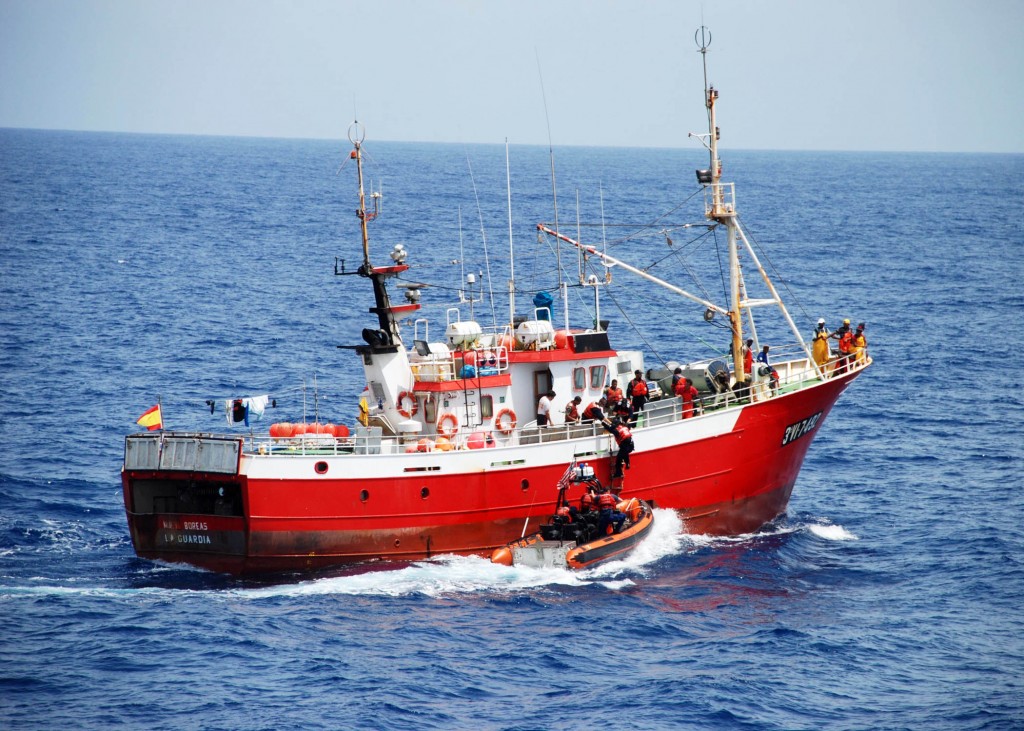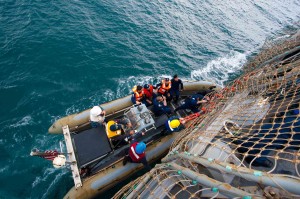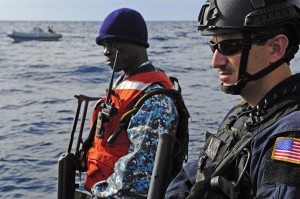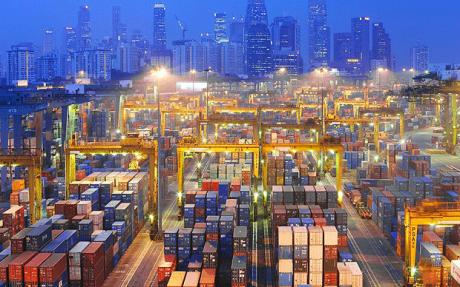The following article is special to our International Maritime Shipping Week. While we often discuss the threats to maritime shipping, this week looks at dangers arising from such global trade, and possible mitigations.
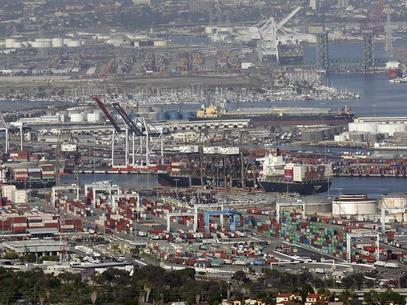
Last year, the Obama Administration released its first-ever National Strategy for Global Supply Chain Security. As stated, the main goals of the strategy are to promote the efficient and secure movement of goods and foster a resilient supply chain. Maintaining a secure and resilient supply chain is certainly critical to ensuring the prosperity of the United States’ economy. However, existing legislation governing maritime cargo transit and port security directly contradicts the goals of this strategy.
In 2007, Congress mandated that 100 percent of the approximately 32,000 cargo containers entering U.S. ports each day be screened. The feasibility of this mandate has been questioned by security experts from day one.
In seeking to establish a workable alternative, Congress should consider supply chain realities in fostering a risk-based approach to maritime cargo security.
Given the extensive economic importance of the maritime supply chain, the vulnerability of maritime cargo to terrorist and other malicious attacks has long been a concern. With this concern heightened after 9/11, Congress and the Administration moved to create a risk-based approach to strengthen maritime security centered on analyzing cargo attributes, such as contents and origin of the cargo container, to single out high-risk cargo for further inspection.
By 2006, however, Congress turned sharply away from the risk-based approach with the passage of the Security and Accountability for Every Port Act, which called for testing the feasibility of scanning 100 percent of U.S.-bound cargo, a requirement that was fulfilled though the creation of the Secure Freight Initiative pilot program.
While the program showed that “scanning U.S.-bound maritime containers is possible on a limited scale,” major challenges existed in expanding 100-percent scanning to all 700 international maritime ports handling U.S.-bound cargo. These findings, however, would be disregarded, and Congress moved to mandate that 100 percent of all U.S.-bound maritime cargo be scanned by July 1, 2012—prior even to the pilot program’s completion.
Proponents of the 100-percent mandate have pointed to the supposed success of mandating 100-percent screening of air cargo. Besides the fact that this screening was limited to domestic cargo—screening of U.S.-bound international cargo proved much more difficult—and that a significantly greater volume of cargo transits through the maritime supply chain, another critical difference is that the air cargo security mandate called for the 100-percent screening of all cargo, whereas the maritime cargo mandate calls for 100 percent scanning.
While screening calls for cargo to be assessed for risk on the basis of contents, origin, and other attributes, scanning means that each of the approximately 10.7 million maritime cargo security containers entering U.S. ports each year must be physically scanned. The growth of maritime cargo containerization in recent decades means that typical maritime cargo containers often measure some 40 feet in length. One key issue regarding screening maritime cargo is, therefore, one of scale. While the basic technology exists to effectively screen cargo containers, the expanded technology necessary to perform this function on the larger forms of containerized cargo largely does not.
Cost and infrastructure are also important factors. A single x-ray scanner, the most common technology used for cargo screening, can have a price tag of $4.5 million, plus an estimated annual operating cost of $200,000, not to mention the roughly $600,000 per year for the personnel required to run the equipment and examine the results. Likewise, the mere placement of scanners can also cause logistical problems, as many ports were not built with natural bottlenecks through which all cargo passes. With today’s economy relying heavily on the timely and efficient movement of goods, such delays could amount to around $500 billion in total profit loss. And once scanning technology is installed, it may encounter multiple problems, such as incompatibility with previous technologies, outages due to weather, and insufficient communication infrastructure to transmit electronic data to the U.S. National Targeting Center-Cargo, where it is assessed.
A large part of the post-9/11 anxiety regarding maritime cargo security has centered on the “nuke in a suitcase” scenario, an extremely low probability event. The vast majority of cargo traveling through the maritime supply chain consists of legitimate goods. The 100-percent maritime screening mandate, however, fails to recognize this reality and instead treats every piece of cargo as a genuine threat.
Congress should rethink the 100-percent cargo security mandate and instead return to a risk-based approach to cargo security, centered on analyzing manifests and other data, to single-out only high-risk cargo for further inspection. Ensuring the security and prosperity of the maritime supply chain is simply too important for Congress not to get this right.
Emil Maine is a National Security Research Assistant at the Heritage Foundation, where he conducts independent research on U.S. defense posture. The views and opinions expressed in this article are his own.


